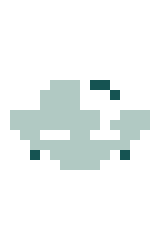Null Face
| Spoiler Warning: This article contains spoilers regarding the Tomb of the Eaters. Proceed at your own discretion. |
Tier
|
6 |
|---|---|
Reputation Bonus
|
All Factions: 70 |
Character
|
] |
ID?
|
The Nil Face |
Worn On
|
|
Extra Info:
| |
Infobox data from game version 2.0.207.72
| |
Null Face is a sultan relic, one of six sultan masks located within the ![]() Tomb of the Eaters. It corresponds with Resheph, sultan of the sixth and final sultanate, the only sultan whose identity and history are the same in every playthrough.
Tomb of the Eaters. It corresponds with Resheph, sultan of the sixth and final sultanate, the only sultan whose identity and history are the same in every playthrough.
The Null Face can be found in a reliquary located within the unfinished tomb. Unlike the other sultan masks, this reliquary will be unguarded and can be taken from freely; however, doing so will cause the sarcophagi and reliquaries of the other sultans to disappear, preventing the player from accessing the latter's contents.
Unlike the other sultan masks, the Null Face has completely static effects. It will not be granted additional faction reputation bonuses (besides that listed above) or relic-based effects like the other masks.
Etymology and History
The Null Face appears to represent a time period during which the sultanate controlled no territory--having lost all of its long-dwindling influence during the time of the last sultan, Resheph. There is a general trend as time advances where the sultanate controls smaller and smaller territories with each successive dynasty, with each mask being named for and representing this territorial area.
In several branches of mathematics, null represents a zero value. In computing, null sometimes represents the absence of a value (with zero being a different value than null). This seems to align with the last sultan, Resheph, who made scant use of his throne, and went on to dissolve the sultanate; the sultanate in Resheph's time could be said to control no territory. This is reflected in the damaged and unfinished nature of the Null Face and the tomb in which it is found.
Shedim, mentioned in the description, are spirits or demons in the Tanakh and Jewish mythology (Reference: Wikipedia)
| ||||||||||||||||||||||||||
